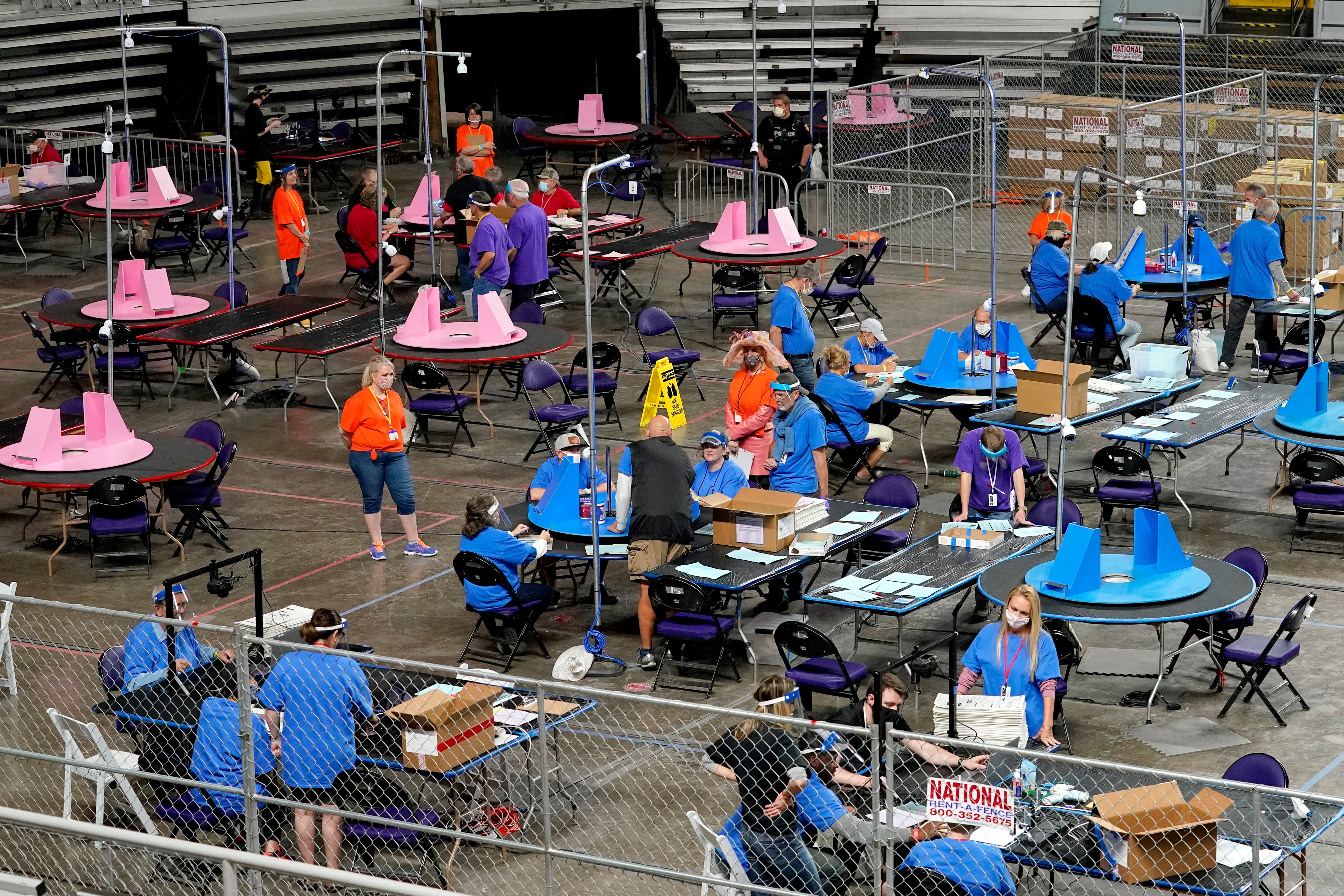On a screen near you: Officials are livestreaming the election process for more transparency
More officials around the United States are livestreaming the election process

Rows of folding tables and empty chairs appear on Ballot Processing View 2. Over on Tabulation View 2, a man in a black T-shirt and shorts is seen shuffling papers near a waist-high machine.
The livestream scenes from Maricopa County, Arizona, of the 2024 election process may not be the most riveting video. But the feeds, already online, and other live videos like it streaming from election sites across the country have a serious aim. They are an effort by election officials to demystify voting and provide greater transparency to a process that in recent years has been subject to intense scrutiny, misinformation and false claims of widespread fraud.
The increase in livestreaming the election process, an operation conducted by local governments nationwide, reflects a broader rise in video streams online, according to Wendy Underhill, election and redistricting director at the National Conference of State Legislatures.
There is a concern, however, among officials that people unfamiliar with what's happening in a livestream could misunderstand what they're watching and reach misleading conclusions.
Here is a closer look at who is streaming elections and what you might see if you tune in.
Which states livestream elections?
National elections are run at the local level. There's not a uniform standard or rule requiring live video feeds, but several jurisdictions, including large ones and those in battleground states, run livestreams. Among them are Philadelphia, Los Angeles County and Washington's King County.
Arizona is an outlier because it has a state law requiring its counties to livestream the elections process, Underhill said.
If you want to understand more about whether your local government is providing a livestream, get involved by contacting them, said Tammy Patrick, chief program officer for the National Association of Elections Officials and a former Maricopa County elections official.
What can I expect if I watch?
That will vary by location. For example, Arizona offers various views of different parts of the process, from ballot drop boxes to tabulation rooms.
Other places, like Philadelphia, haven't begun streaming yet. The city is set to begin streaming on Election Day, Nov. 5., at 7 a.m. EST.
One thing the streams will likely have in common is that the election processes they show can be slow-moving — the kind of methodical material that few would consider must-see TV.
People should be patient as officials deal with an array of circumstances, including having to drive ballots from polling places to processing centers, said Jennifer Morrell, CEO and co-founder of The Elections Group. It's made up of former state and local election officials who offer training and other support to officials across the country.
In part because of technology, people are used to many things happening almost automatically, she said, but there are just the “logistical realities” that could make the process take longer. She warned against viewers making assumptions based on something they see on a livestream or a single moment in the vote-counting process, noting that leads can shift and a candidate who may be winning at one point in the count could be losing hours later.
That isn't an indication of fraud. “I would just really emphasize that people have to be patient," she said.
How do I know what I’m seeing?
That’s perhaps the biggest question and a potential hurdle to transparency, Patrick said.
Officials have learned since 2020, when livestreaming grew in popularity during the COVID-19 pandemic, that voters might not know or understand what they’re watching on a screen, she said.
“The more transparent we can be, the better off it is,” Patrick said. “When you are transparent, it does not mean that individuals will necessarily know what they’re seeing or understand what they’re seeing.”
It could provide fodder for someone to take something out of context. In part to address that, some places have begun adding signs to explain what elections workers are doing, so viewers have a better idea of what’s happening on screen, Patrick said.
A solution, Patrick suggested, is to get involved: Contact local and state officials, sign up for tours, ask to be a poll worker.
“There are plenty of roles where you can educate yourself on all the safeguards that are in place to protect the system, to make sure that it's eligible voters that are participating," she said. “And that’s, quite frankly, I think the best way to get involved. But you have to be willing to accept the facts and the truth.”
____
Bookmark popover
Removed from bookmarks